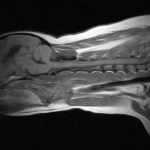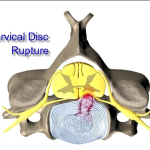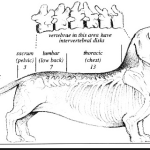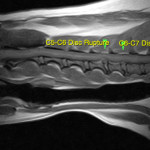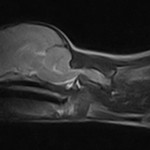Cervical (neck) problems are a common reason for owners to seek professional help for their pets. This issue plagues animals of all sizes but especially small to medium size dogs.
- There are seven cervical vertebral bodies in the neck, but only 6 intervertebral disc (C1-C2 does not have a disc).
- Neck pain can vary from slightly clinical (mild) to 4 limb paralysis (severe).
- There are several issues that can cause neck pain in a patient, including trauma, infectious disease, congenital abnormalities, or disc disease.
- The most common condition seen clinically is intervertebral disc disease.
- The clinical symptoms associated with this condition are caused by compression of the spinal cord from a ruptured disc. The disc material, in most cases, should be removed surgically.
- The procedure itself has a good prognosis for return of function, as long as surgery is performed before severe clinical symptoms develop.
- Not all cervical neck pain warrants surgical intervention and are treated medically.
- The key to any successful treatment, however, is correct and timely diagnosis.
- The quicker a disc rupture can be identified and a confirmatory diagnosis made, the better the outcome will be for the animal.
- Cervical Disc Rupture
- Spinal Layout
- C1-C2 Luxation
Symptoms of a Cervical Neck Problem:
- Animal is reluctant to run, jump, or play normally, usually with a sudden onset of symptoms.
- Animal is holding one front limb up off the ground (root signature) and holding neck in a still position.
- Pain is elicited when animal tries to move neck or when neck is touched.
- Animal has twitching or jerking in the neck when moving.
- Stumbling or knuckling over in the front limbs.
- All four limbs are paralyzed.
- Animal wants to look up at you with their eyes without moving neck.
- Animal seems uncoordinated in the rear limb (esp large dogs – Wobblers Syndrome)
.

